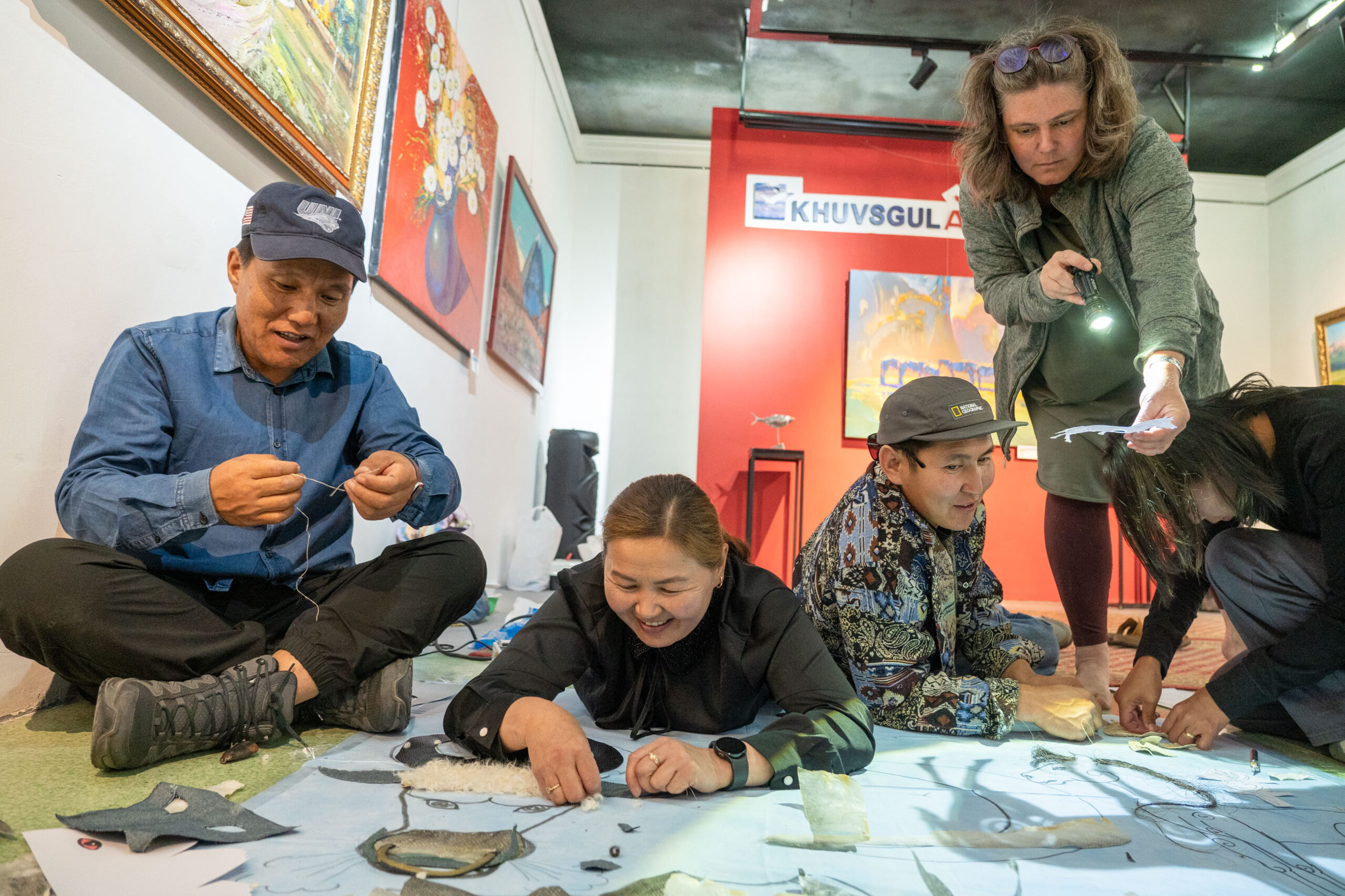Co-creative workshop: On August 10-11, 2025, the Frozen Commons team, collaborated with experts – social and natural scientists, artists and artizans, and Indigenous and local knowledge holders from Khovsgol, Kamchatka, and Alaska, teachers and herders, to start envisioning a shared understanding of snow, ice, and permafrost-related cultures, landscapes, and livelihoods. For two days, we worked together exchanging our knowledge, visions, songs, dances, stories, and ideas that resonated despite existing language, cultural, and disciplinary boundaries. We realized in practice that the arts can serve as a language of communication.
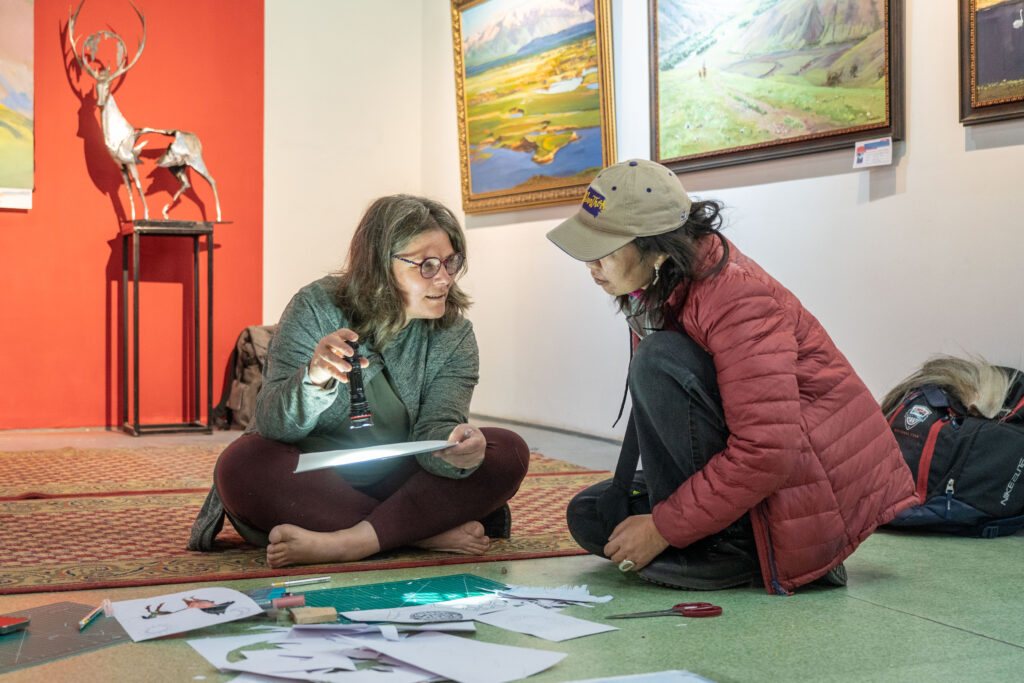
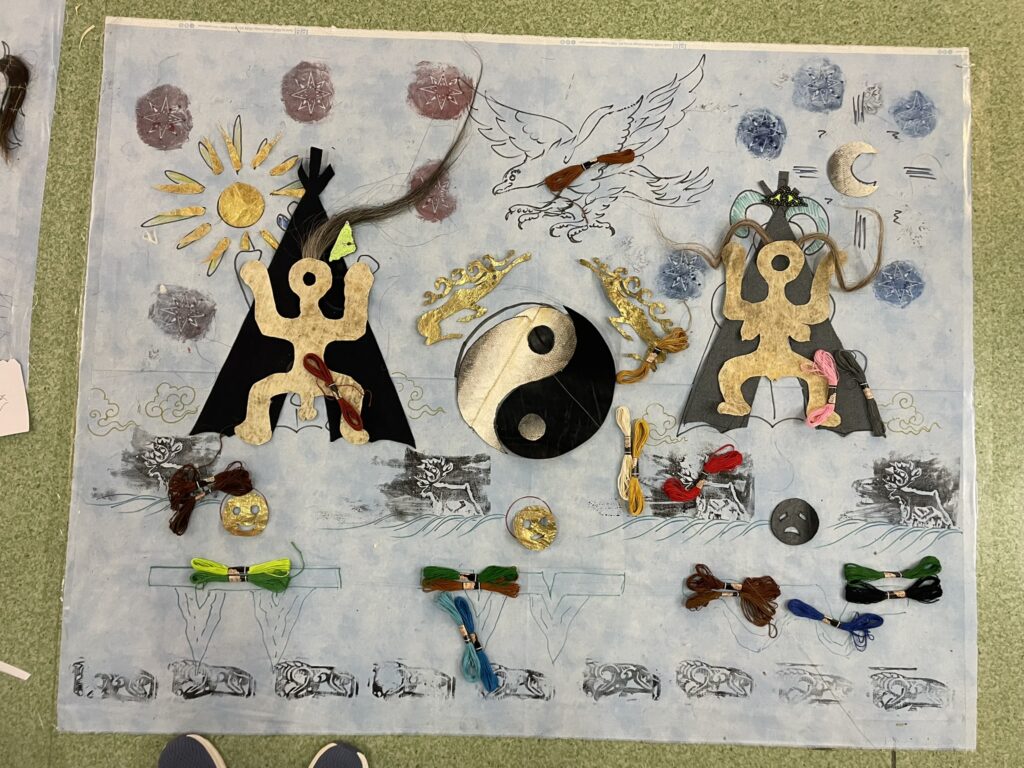
Amber Webb and Maite Agopian volunteered to lead this workshop. For preparatory work, they asked participants to select and bring up to 5 photos, pictures, objects, or sounds that, in their opinion, represent frozen commons and to bring materials that they traditionally work with. Responding to this request, participants brought salmon skin, sheepskin, horse hair, felt, calfskin, and leather. Organizers provided them with 6-yard fabric, artificial sinew, ax-to knives, self-healing mats, scissors, construction paper, multi-colour threads, and drawing and painting materials.
On Day 1, participants traveled to Lake Khövsgöl, which is considered the Ocean by all people in Mongolia and has deep cultural, environmental, and social significance as one of the most ancient lakes in the world, the largest reservoir of fresh water in the country, and tourist destination. In the morning, participants introduced themselves and their relations to frozen commons. In the afternoon, participants traveled by boat to the middle of the lake to record the sounds of water and songs. Local branch of the Mongolian Union of Artists hosted the workshop in their art gallery, shared their artistic skills and visions, and guided participants toward deeper connections with the Khövsgöl Lake and Lands, on Day 2. In the morning, participants drew on construction paper shapes that reflected frozen commons according to their opinion and expertise. The shapes represented the wide range of perspectives, starting from sun and moon, important for nomadic cosmologies, to animals, such as the Bull of Cold, important for Sakha culture, and the Horse, important for Mongolian cultures, and to permafrost processes, including thermokarst and frost heaving, that are affected by climate change. These shapes were then cut out to create shade work by Maite. Local artists selected some of those shapes for drawing on the fabric. Then, some shapes were carved out of different materials brought by participants and sewn onto the fabric. Some elements are planned to be embroidered later on by Amber Webb.
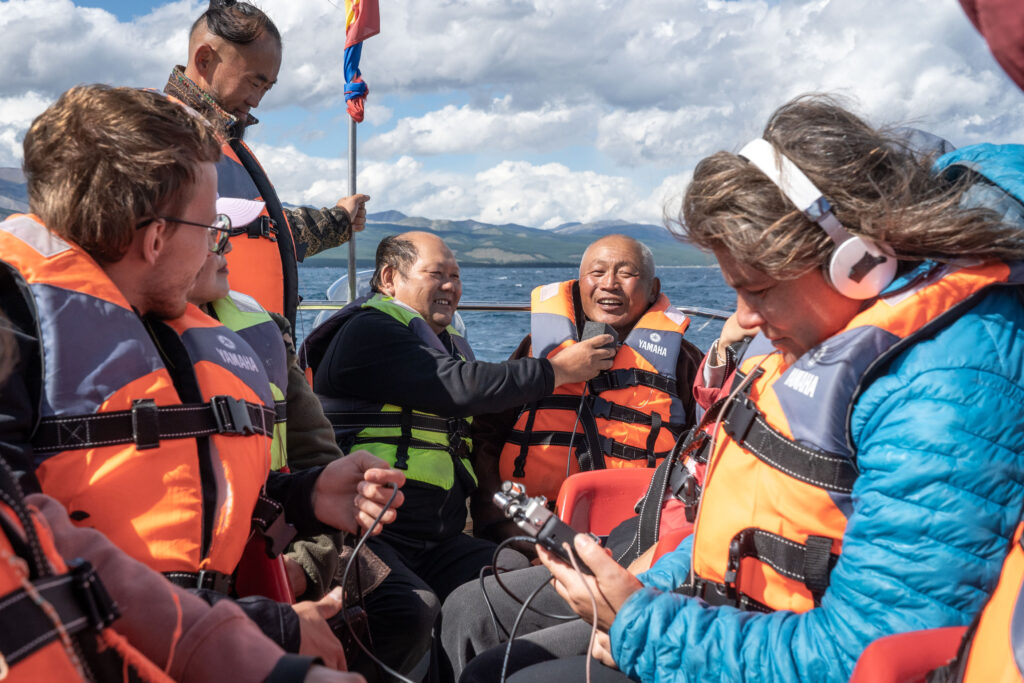
We deeply appreciate the efforts by photographer Tsendpurev Tsegmid and researcher Sandag Khadbaatar to translate in such a highly multidisciplinary and multilingual environment. We celebrate contributions of our local and regional experts: teachers and artists from Bayanzurkh and Tsagaannuur sum (Jijighvv Dawaanyam, Bayarsaikhan and Батцэцэг Ганхүү), Dukha leader Ulziisaikhan Sodov, and artists from Mörön Byambaa Bat-Ulzii, Lkhan-Aazhavyn Buyannemekh, Bayarzhargal Tsevegdorj, Baljinnyam Galsandorj, and Dalai-Erdene for sketching, carving, and sewing shapes into our collective blanket. While there is a lot to complete this work and lessons learnt for future collaboration, we are happy to find common ground and look forward to new opportunities this beginning friendship will bring.
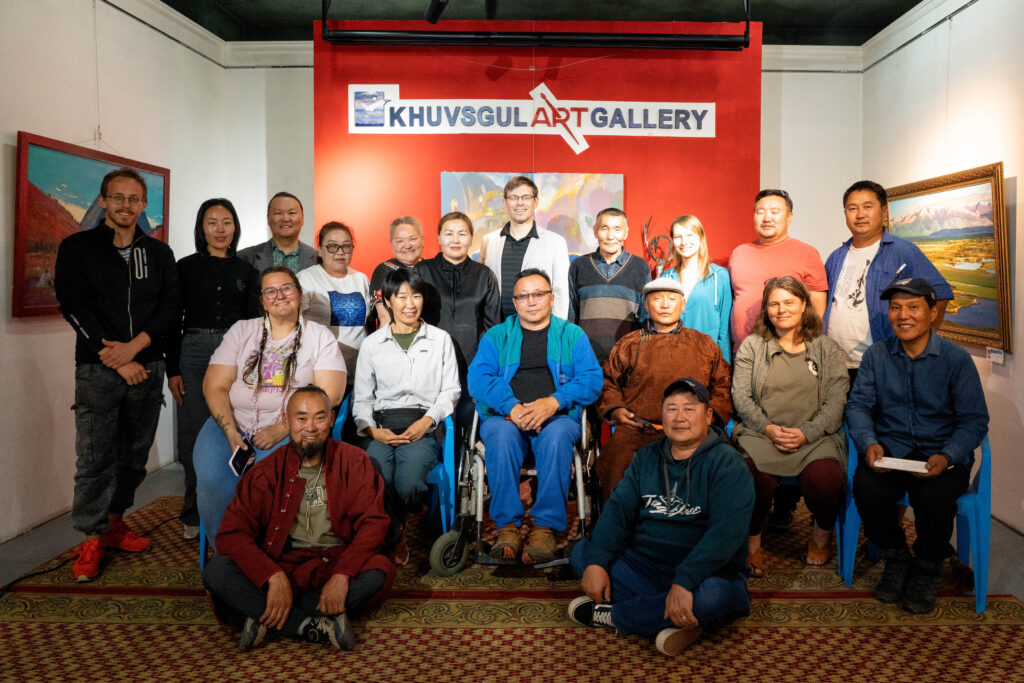
Photo credit: Natalia Saprunova.
Photos of ArtSLInK products: Vera Kuklina

